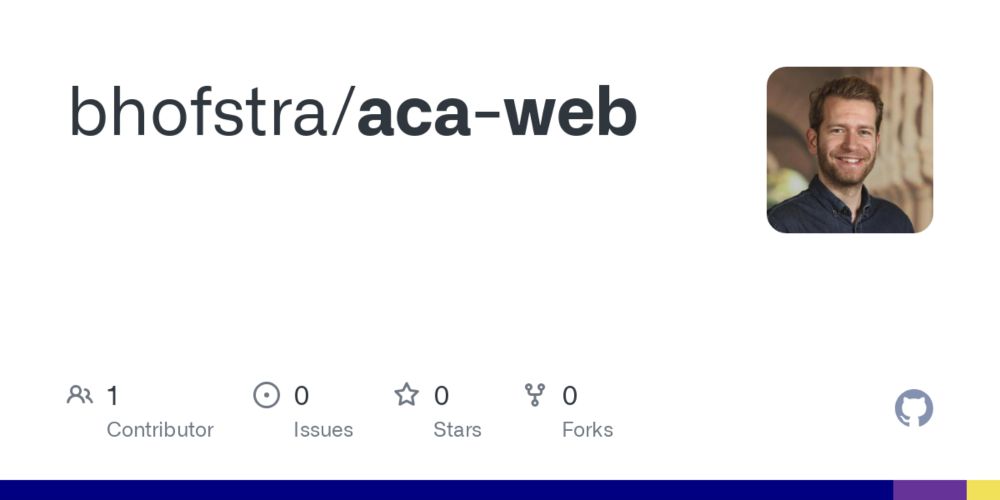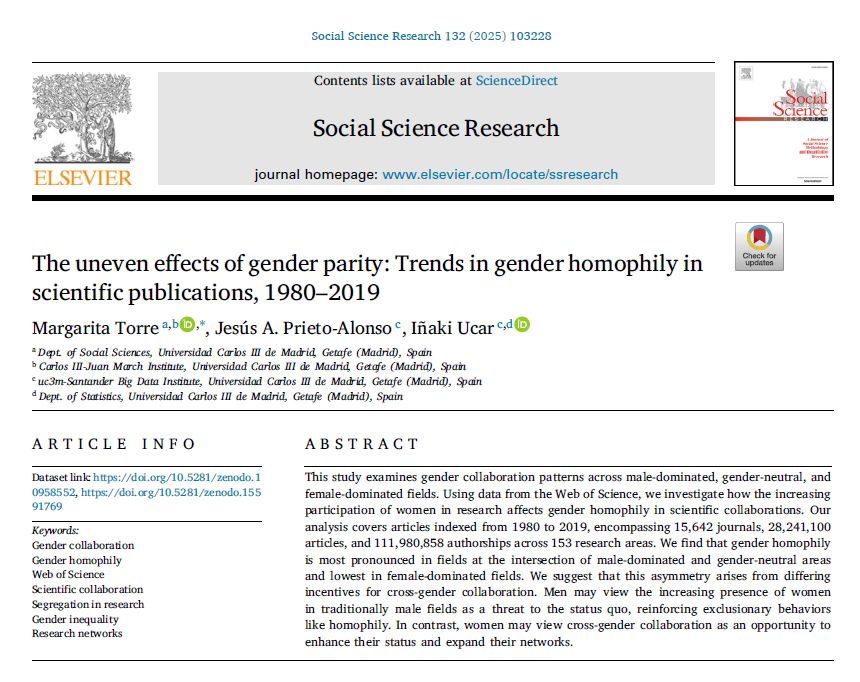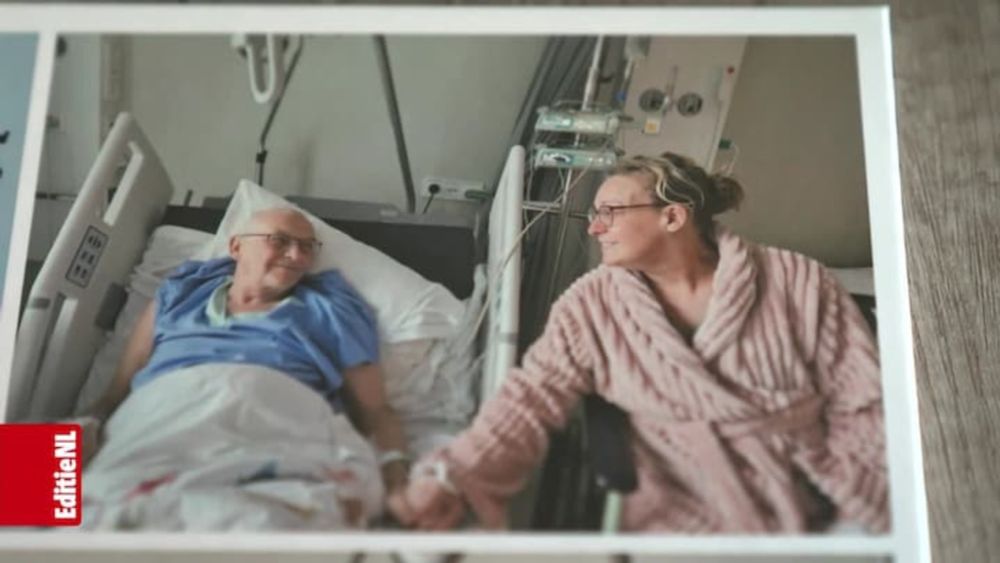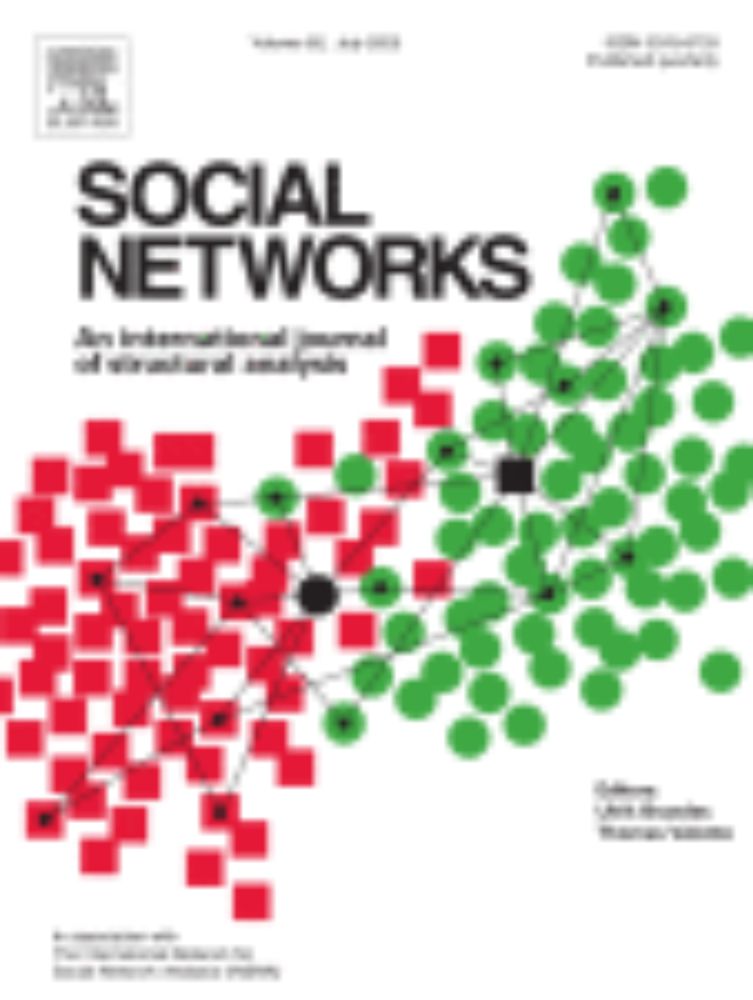Big congrats, sounds super interesting!
09.12.2025 14:37 — 👍 1 🔁 0 💬 0 📌 0
This is an important paper for institutes that want to engage more with non-academic audiences. @eui-eu.bsky.social
03.12.2025 08:52 — 👍 6 🔁 1 💬 0 📌 0

Professors in the media: dynamics of cumulative advantage, reputation, and gender
Abstract. Translation of science to a general public is increasingly important in modern academia. Yet, there is little knowledge on whether and why scient
📢 New #OpenAccess!
Why do some professors appear in the media far more than others?
#RH_Heiberger @BasHofstra #S_Unger find both patterns of cumulative advantage & gender inequality, with men more likely to become “short-listed”!
➡️ Read it ungated at: doi.org/10.1093/esr/jcaf037
image.png
03.12.2025 08:17 — 👍 19 🔁 11 💬 0 📌 3
LinkedIn
This link will take you to a page that’s not on LinkedIn
Saïd explains the paper very well in the thread!
This paper integrates multiple important dimensions: interdisciplinary team, replication materials (lnkd.in/eWm6D94P), linking together cool digital trace data, all to answer an important sociological question.
21.11.2025 12:55 — 👍 1 🔁 0 💬 0 📌 0
Thrilled to share our latest open access paper published in European Sociological Review by @mshu.bsky.social, Raphael Heiberger, and myself!
You can find it here: academic.oup.com/esr/advance-...
21.11.2025 12:55 — 👍 7 🔁 2 💬 1 📌 0
Apply - Interfolio
{{$ctrl.$state.data.pageTitle}} - Apply - Interfolio
NYU Abu Dhabi is recruiting a 3-year Postdoctoral Associate for a Computational Social Science project on the coevolution of ingroup bias and group boundaries.
For more details and to apply, please visit: apply.interfolio.com/173544.
24.10.2025 10:09 — 👍 4 🔁 4 💬 0 📌 0
This is a key paper in the growing literature on the effects of COVID-19 on academia. It is done purely with webscraped data, and it is a showcase how you can do fine-grained analyses if you put in the work.
03.10.2025 10:22 — 👍 0 🔁 0 💬 0 📌 0
But:
- Barriers to productivity remain persistent for women scientists
- Yet, the productivity gender gap did not widen during COVID
03.10.2025 10:22 — 👍 0 🔁 0 💬 1 📌 0
📖 What did we find?
- During COVID-19, scientists published about 33% fewer papers
- Dutch science was hit hard: “lost” around 20,000 publications
- Scientists with childcare responsibilities struggled to maintain productivity
- Researchers with a migration background were also hit harder
03.10.2025 10:22 — 👍 1 🔁 0 💬 1 📌 0
🔭 We analyzed publication data from more than 8,000 scientists across all disciplines at all Dutch universities, covering the period from 1990 to 2022.
03.10.2025 10:22 — 👍 0 🔁 0 💬 1 📌 0
🧐 We asked whether women in Dutch science show a stronger productivity decline than men during COVID-19
03.10.2025 10:22 — 👍 0 🔁 0 💬 1 📌 0
Ik werd geinterviewd met een aantal vragen over hoe je duurzame en nuttige netwerken opbouwt als student in een interessant stuk van de trouw @trouw.nl in de introductieweken.
12.08.2025 08:25 — 👍 3 🔁 0 💬 0 📌 0

GitHub - bhofstra/aca-web
Contribute to bhofstra/aca-web development by creating an account on GitHub.
I built the website with Quarto, R, GitHub, and host it through Netlify. Curious how it’s made? The source code is available on my GitHub repository: github.com/bhofstra/aca.... I licensed it through CC-BY 4.0, so feel free to re-use what you need.
01.08.2025 10:40 — 👍 1 🔁 0 💬 0 📌 0
Bas Hofstra – bashofstra.com
I’m excited to share the launch of my new website: bashofstra.com!
This site brings together all my work in a clear, accessible format. The new website is clean, minimal, responsive, and scalable and works seamlessly on desktop and mobile.
01.08.2025 10:40 — 👍 2 🔁 0 💬 1 📌 0

Recently presented at the CREST Sociology seminar, now published in @ssreditorial.bsky.social: @mtorre.bsky.social's "The uneven effects of gender parity"
Link: doi.org/10.1016/j.ss...
29.07.2025 10:26 — 👍 11 🔁 4 💬 1 📌 0

Aflevering 200
Journalistiek programma met een eigen kijk op het dagelijks nieuws.
📺 RTL EditieNL besteedde aandacht aan en interviewde mij over ons onderzoek naar de kennissenkring van Nederlanders. Samen met Beate Völker, Rense Corten, en Frank van Tubergen onderzochten we hoe groot deze netwerken zijn en hoe homogeen ze blijken te zijn.
Vanaf 7:32: www.rtl.nl/nieuws/uitze...
22.07.2025 06:57 — 👍 2 🔁 0 💬 0 📌 0
Met in de @volkskrant.nl tekst en uitleg bij de studie:
www.volkskrant.nl/wetenschap/e...
15.07.2025 12:13 — 👍 4 🔁 0 💬 0 📌 0
De @volkskrant.nl schreef een stuk over ons onderzoek naar sociale contacten en haar scheidslijnen! Zie hieronder:
Onderzoek met Beate Volker, @rensec.bsky.social, en Frank van Tubergen.
15.07.2025 12:11 — 👍 5 🔁 2 💬 2 📌 1

Een Nederlander kent zo’n 568 mensen: ‘Soort zoekt soort en opleiding is een bepalende factor’
Een Nederlander kent zo’n 568 mensen: ‘Soort zoekt soort en opleiding is een bepalende factor’
15.07.2025 11:41 — 👍 5 🔁 3 💬 0 📌 1
Nothing like having your Social Networks article (as seen at #Sunbelt2024) published while attending #Sunbelt2025!
27.06.2025 15:57 — 👍 8 🔁 2 💬 0 📌 0
LinkedIn
This link will take you to a page that’s not on LinkedIn
You can find the paper here: www.sciencedirect.com/science/arti...
You can find the replication website to the paper here: bhofstra.github.io/netsize_dutch/
(PS: fitting that this gets out while I'm currently at the Sunbelt conference of the International Network of Social Network Analysis!)
27.06.2025 14:50 — 👍 1 🔁 0 💬 0 📌 0
Additionally, we find a pretty strong presence for gender and educational homogeneity.
These findings have important implications for Dutch social structure as to who is at risk to become socially isolated and as to where social barriers between groups exist.
27.06.2025 14:50 — 👍 1 🔁 0 💬 1 📌 0
We find fascinating patterns where average network size across a representative set respondents in the Netherlands is about 518 people. But more importantly, it decreases with age, unemployment, lower income, lower house values, lower education, and fewer people in a household.
27.06.2025 14:50 — 👍 0 🔁 0 💬 1 📌 0
This is a project that came out of our earlier popular publication at Quest where they asked us similar questions!
27.06.2025 14:50 — 👍 0 🔁 0 💬 1 📌 0
In this paper we use computational methods (for insiders, specifically the Network Scale-Up Method) to calculate both network size and its determinants, as well as network homogeneity and its determinants.
27.06.2025 14:50 — 👍 0 🔁 0 💬 1 📌 0
Computational Social Science at the University of Stuttgart | https://www.sowi.uni-stuttgart.de/en/departments/css/
Dit is het officiële account van Trouw. Berichten worden automatisch geplaatst.
Meer lezen over Trouw? Kijk op trouw.nl/idealen
Changing the world for the better through world-class social science research and education. https://www.ucl.ac.uk/ioe/departments-and-centres/ucl-social-research-institute
Estudiante de Sociología y Ciencias Políticas en la Universidad Carlos III de Madrid.
Social Scientist. Senior researcher at GESIS - Leibniz Institute for the Social Sciences, Cologne.
www.sewenz.com
Associate Professor in Quantitative Social Science at UCL, interested in civic engagement, religion, ethnic integration, residential mobility, quant methods.
https://profiles.ucl.ac.uk/67454-dingeman-wiertz
Assistant Professor in Sociology @Radboud_Uni | Studying in- & exclusion processes of migrants with a mix of methods 📊🎙️ | In de redactie van Mens & Maatschappij
Professor of Online Communication. Researching the transformation of communication and society. Critical optimist.
Research Assistant at the University of Münster
Assistant Professor in Sociology at the Collegio Carlo Alberto and Affiliated Researcher at the National Research Council of Italy
https://www.carloalberto.org/person/aron-szekely/
The Centre for Complex Systems Studies (CCSS) stimulates and facilitates the collaboration on complexity science over the boundaries of disciplines. Learn more: uu.nl/en/research/centre-for-complex-systems-studies-ccss
Professor at the University of Bamberg |
Head of the Research Department for Migration and International Labour Studies at the Institute for Employment Research | Sociology | ISA RC28 treasury/secretary
Associate Professor @ UBC
computational sociology
machine learning is feminist
You only have to look at the Medusa straight on to see her. And she’s not deadly. She’s beautiful and she’s laughing.
www.lauraknelson.com
· Aardwetenschapper · (geo)journalist · heeft er kijk onder · ava ⇨ Enithka · 🌋 · samgerrits.com
Sociologist @goetheuni Frankfurt. Member of @infer-frankfurt. Interested in social networks, intergroup relations, ethnic/religious identity & more.
#Quantitative Science Studies / Social #Stratification in Science / Global #Academic #Profession / Full Professor / University of Poznan/ #UNESCO Chairholder / proud #Academia #Europaea member (MAE) / fundamentally open-minded, happy, sometimes lucky
Department of Political and Social Sciences @eui-eu.bsky.social.
We focus on contemporary challenges facing European politics and society.🌐 eui.eu/SPS
https://tijdschriften.boombestuurskunde.nl/tijdschrift/benm/detail









